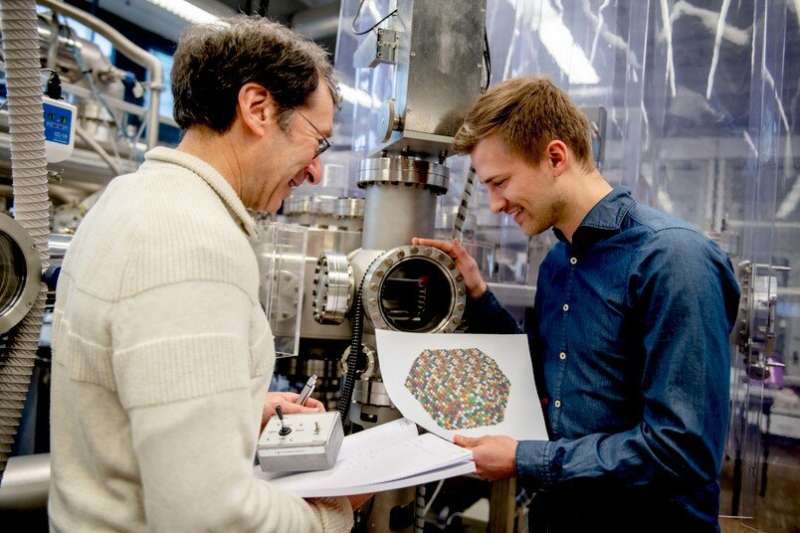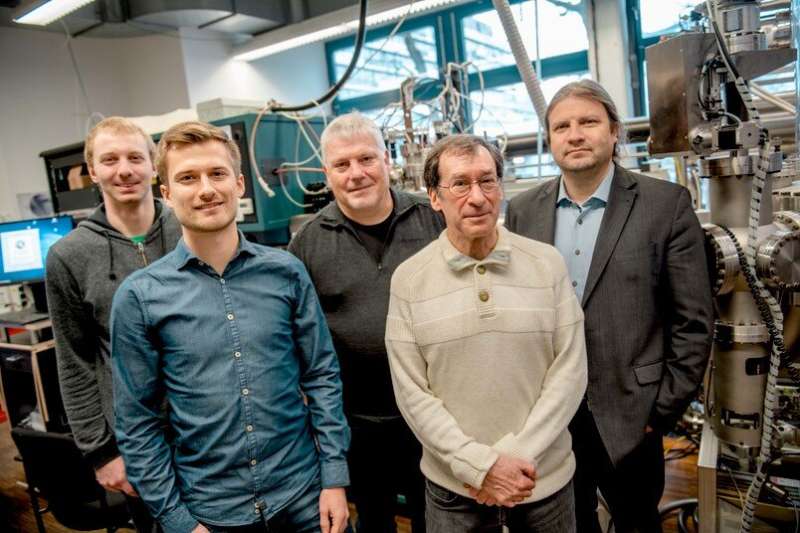Fast screening for potential new catalysts

A new concept makes it possible to identify the most promising among an abundance of possible element combinations.
The success of the energy transition depends significantly on efficient electrocatalysts, for instance for fuel cells or the reduction of CO2. Special alloys made from five or more elements are promising candidates. A team of researchers from Ruhr-Universität Bochum (RUB) has developed a concept in order to quickly screen an abundance of possible element combinations to identify which are worth optimizing. It helps to directly ascertain the potential of a possible alloy. The team reports in the journal Angewandte Chemie International Edition on 22 December 2019.
Efficient catalysts made from inexpensive and available elements
The researchers' hopes with regard to new catalysts made from inexpensive and available elements rest on what are known as complex solid solutions, also called high-entropy alloys. They consist of five or more elements that are homogeneously mixed and the diverse, complex interactions of which enable fine adjustments of the relevant properties. Importantly, it is not only the properties of the individual elements that are crucial but above all their interaction. "This opens up a wide range of otherwise unachievable possibilities in order to simultaneously optimize price and performance for possible applications," says Professor Wolfgang Schuhmann from the Center for Electrochemical Sciences at RUB.
However, fundamental knowledge about the recently discovered new catalyst class is still lacking. What information could be provided by measurements in order to make targeted advances in catalyst development? How does this help find the right one among the almost infinite possible combinations? What effect does replacing an element have on the properties?

Interpreting results more accurately
"We have developed a concept that enables us to understand the correlations between the selection of the elements, theoretical, activity-defining properties, and actually measurable parameters," reports Tobias Löffler, a doctoral candidate in electrochemistry. As the complex solid solutions differ from conventional electrocatalysts in all these points, this understanding is fundamental for experimental progress.
The researchers are thus faced with the challenge that not only the combination of elements but also the proportion of each element is crucial and any deviations change the properties. "We show how experiments with an alloy made from, for instance, five equal parts of each element can be interpreted in order to identify the element combination as potentially active," explains Tobias Löffler. The researchers are thus able to identify quickly whether it is worthwhile optimizing the proportions of the elements. "This enables us to reduce the screening workload for possible material compositions to a fraction without overlooking promising candidates," explains Wolfgang Schuhmann. Without this knowledge, it is possible that combinations could be filtered out using conventional evaluations even though these could be highly interesting if the element ratios were optimized. "What's more, this concept forms a cornerstone in understanding the complex mode of action of this material class, which helps to better understand the possible parameters that can be adjusted and thus derive promising design concepts from this."
Encouraging researchers
The researchers tested these conceptual considerations with selected alloys using the oxygen reduction reaction relevant to fuel cells. They were able to demonstrate in which cases replacing or adding an element to an existing element combination has a positive effect and vice versa. They were also able to identify combinations that are suitable for further optimization.
"For material synthesis, this means an immense saving in time and money," says Professor Alfred Ludwig, Chair for Materials Discovery and Interfaces at RUB. "Producing and analyzing all of the possible element ratios of an alloy consisting of five elements is a huge challenge. By eliminating elementary hurdles, we hope to further facilitate access to this highly topical and technological relevant field and encourage more researchers to contribute with their respective skills."
More information: Tobias Löffler et al. Design of Complex Solid Solution Electrocatalysts by Correlating Configuration, Adsorption Energy Distribution Patterns and Activity Curves, Angewandte Chemie (2019). DOI: 10.1002/ange.201914666
Journal information: Angewandte Chemie International Edition , Angewandte Chemie
Provided by Ruhr-Universitaet-Bochum





















